My grandfather always told me that the best way to experience the ‘joy’ of The City of Joy was on a tram. “One witnesses the soothing magic of Kolkata on a tram ride,” he would proclaim.
So, one nippy January morning, I decided to put his theory to the test. Kolkata’s tram route number five — from Esplanade to Shyambazar via Lenin Sarani, Nirmal Chandra Street, College Street and Bidhan Sarani — seemed ideal.
As I waited patiently for a tram to arrive at the mouth of Esplanade’s tram depot, Kolkata’s hustle and bustle carried on around me. In a swift 15 minutes, countless taxi doors were banged shut, a herd of bleating goats passed by and every bus conductor bellowed strings of ‘moulalimoulalimoulali’ at the traffic light.
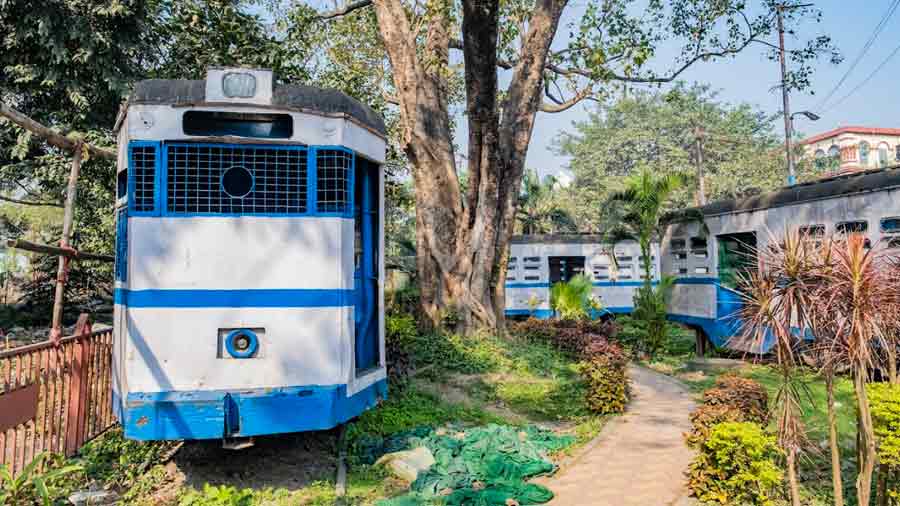
The Esplanade tram depot
Ritagnik BhattacharyaWhen I finally boarded the tramcar — one wide, wooden step at a time — my first instinct was to grab a window seat. I was adamant to witness that ‘soothing magic of Kolkata’. A faint breeze in my face, a familiar rumbling courtesy the tram’s clanky engine and a fresh scent of petrichor unlocked happy childhood memories as I sat back and took in the city.
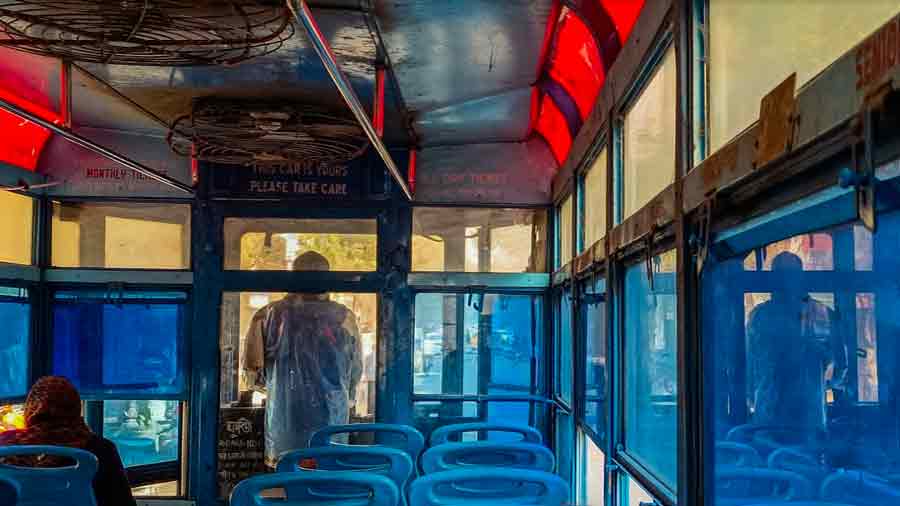
One step into the tram and the tumult of the outside is replaced by the slow thrill of the ride
Ritagnik BhattacharyaIn its heyday, trams were Kolkata’s most efficient mode of public transport. Now, it’s been reduced to a nostalgia-ridden ride. “I used to travel a lot by tram when I was growing up. Nowadays, people only take trams when they have a good 45 minutes in hand and a bag of peanuts to enjoy on the ride,” said Dilip Kumar, a 73-year-old fellow passenger, perfectly summing up the journey of Kolkata’s trams over the last century.
A tram’s tranquillity

Wooden chairs, antique fans and a compartment to witness the ‘soothing magic of Kolkata’
Ritagnik BhattacharyaOne step into the tram and the tumult of the outside was replaced by the slow thrill of the ride. The pale rays of the sun bouncing off the wooden chairs, coupled with the quaint chimes and antique fans, certainly kept the charms of old-world ‘Calcutta’ intact. One minute into the ride and I found myself lost in a world of serenity that held steady till I jumped off a leap away from the heart of Shyambazar.
City silhouettes
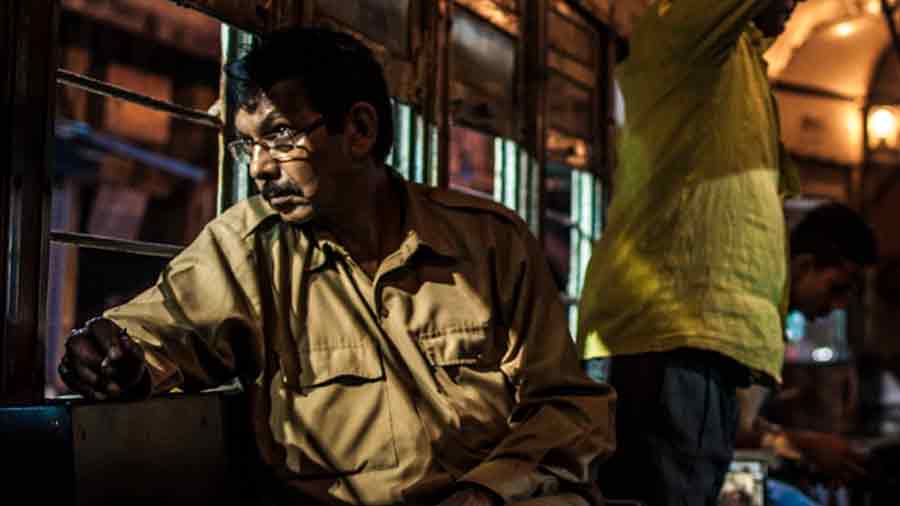
A window seat is a must to watch the world pass by
Ritagnik BhattacharyaAs the tram rattled on, I witnessed colonial facades steeped in history — Kolkata’s age-old colleges, vibrant cinema halls that were once the life of the city and the dozens of book stalls that dot the city.
A stark contrast in architecture and urban planning is apparent as the route extended from Kolkata’s central localities to its northern regions. The streets in central Kolkata are broad, well-planned and well laid out. Architecturally, the structures are better designed, falling somewhere between 18th-century French and Victorian England-style. In north Kolkata, the streets are narrower. The architecture is cluttered, crumbling, and yet charming.
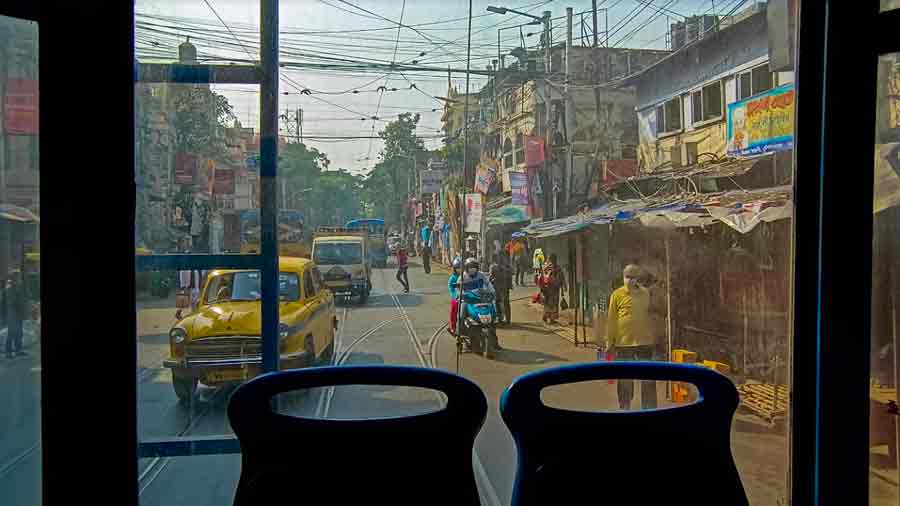
North Kolkata, from the inside
Ritagnik BhattacharyaKolkata’s ‘grey town’
Another pocket that we rattled through, birthed during the British Raj, was the brick-red neighbourhood called Bow Barracks. “This region has always been dominated by the city’s Anglo-Indian and Chinese communities. You see, when the British chose to reside in Fort William, these barracks were opened to Indians and the Anglo-Indians flocked here. In those days, they’d call this part of Kolkata ‘grey town’,” explained Kumar, with a laugh. Eight decades later, a certain uneasiness coloured his laugh.

Sankal Chowdhury, 59, has been a conductor on this tram route for the last three decades
Ritagnik BhattacharyaThe Bow Barracks is influenced by several intricacies. Take the breakfast fare for instance —there’s halwa-puri and dal-puri, bakharkhani and Bandel cheese, kochuri aloo and chanaar dal and the choicest jalebis or jilipis. Several cultures seeped in during the British Raj and have been cemented in over the years.
A glimpse into the beauty of Kolkata’s population
On any given morning, a glance through the tram’s window railings — always a standard five inches apart — reveals commuters from different walks of life.
I spotted a young cyclist picking up newspapers from a newspaper wholesaler on the kerb, a group of revellers without a care in the world gathered around a sugarcane juice seller, scores of office-going individuals making a beeline for the next bus headed towards Dalhousie, and a suit in a sleek Bentley casually cruising through, probably towards the city’s tech hub in Salt Lake.
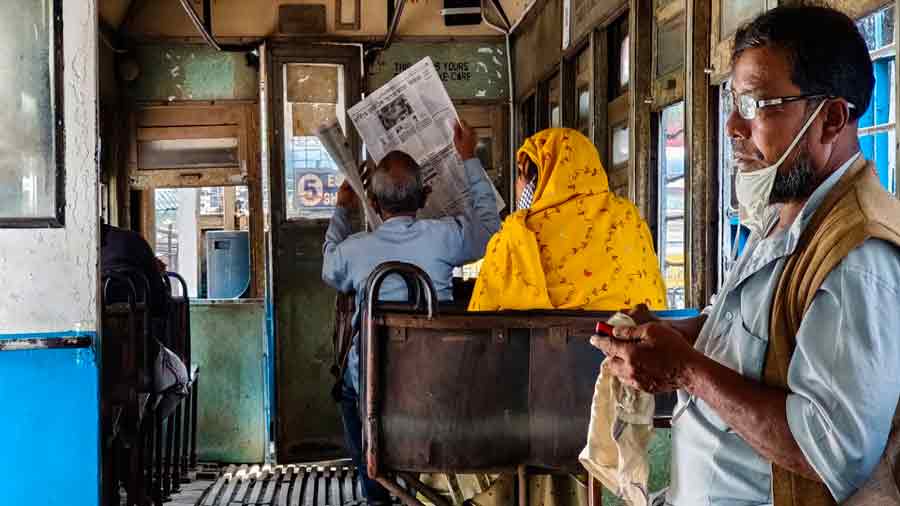
Once the preferred mode of transport in the city, trams have been reduced to a nostalgia-ridden ride
Ritagnik BhattacharyaOne gaze captured the beauty of Kolkata’s diverse population.
As the tram continued to rattle on, I had the unique opportunity of experiencing the spirit of Kolkata. Turns out, my grandfather’s proclamation was spot on.






